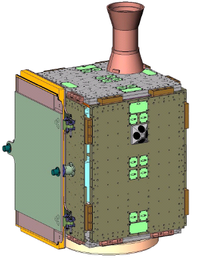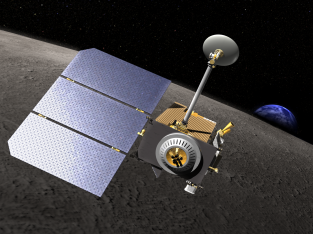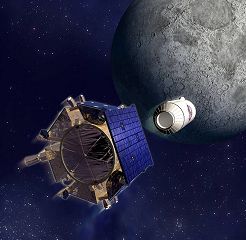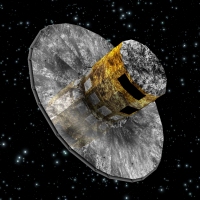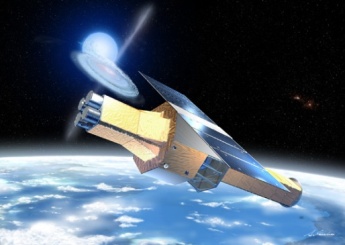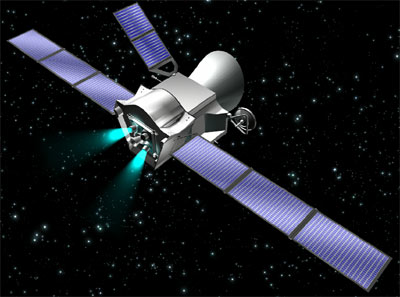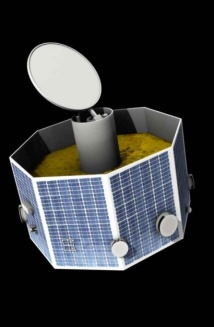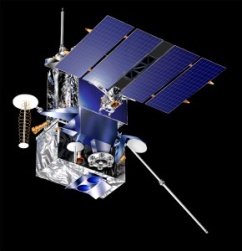SpaceWire is used by space agencies, major aerospace companies, and universities across the world. It has been implemented in many high profile missions, including the list below:
Swift
NASA’s Swift satellite is a multi-wavelength observatory which has been observing gamma-ray bursts since 2004. Planned to stay in low-Earth orbit for seven years, Swift has already exceeded its goal of observing 200 bursts, already having recorded over 400. SpaceWire is used to transfer information between the detectors and instrument readout electronics, and the instrument command and data handling unit.
Lunar Reconnaissance Orbiter
NASA’s Lunar Reconnaissance Orbiter (LRO) was launched with the L-CROSS mission and has provided extensive high resolution data about the moon. LRO is looking for resources and potential landing sites, and characterising the radiation environment. It also acted as a data relay for L-CROSS. Launched in late 2009, LRO is to remain in low polar orbit of the Moon for a year. LRO uses SpaceWire to connect its cameras, instruments, and communications, to the Command and Data Handling Computer.
Lunar Crater Observation and Sensing Satellite
The Lunar Crater Observation (L-CROSS) was launched together with the Lunar Reconnaissance Orbiter in June 2009. L-CROSS completed its mission four months later, successfully discovering the existence of water at the Moon’s South Pole. L-CROSS used SpaceWire in a very similar way to LRO.
TacSat-4
TacSat-4 is the fourth edition of the U.S. Military’s tactical satellite series. As with others in the series, TacSat-4 has real-time data requirements to provide military commanders with data. SpaceWire has been used as part of the payload-bus interface. It has been completed and is due to launch in August 2010.
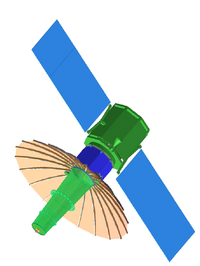
Gaia
Gaia is a star mapping mission which aims to measure around a billion stars in and beyond our Galaxy, focusing on their positions, motions, and other physical characteristics. Gaia is currently in the implementation phase and is due to launch in 2012, when it will travel to L2 and remain there until 2020. Gaia is using SpaceWire to transfer data from the optical terminal to the video processing units, the payload data handling unit, and the central distribution and monitoring unit.
ASTRO-H
ASTRO-H is an X-ray observation satellite designed by JAXA. It has six planned instruments, hard and soft X-ray telescopes and imagers, a soft X-ray spectrometer, and a soft gamma-ray detector. ASTRO-H is currently in the integration and test phases, and is due to launch towards the end of 2013, after which it is planned to stay in nominal operation into 2016. SpaceWire is being used as the primary data-handling system on the mission.
The James Webb Space Telescope, ESA, NASA
The James Webb Space Telescope (JWST) is an infrared observatory which is planned for launch in 2014 with an anticipated life of five years. This ambitious NASA/ESA/CSA joint project aims to study deep into the past of our Universe by searching for distant traces of light. SpaceWire is being used extensively within the JWST, acting as the main data-handling bus.

BepiColombo Mercury Planetary Orbiter
ESA’s Mercury Planetary Orbiter (MPO) will examine the surface and internal structure of Mercury. MPO will be launched in 2014 together with the JAXA MMO as part of the combined BepiColombo mission. After six years it will arrive at Mercury to begin its year long nominal mission, with the option of a one year extension. SpaceWire is being used to transfer data from the payloads to the data processing unit.
BepiColombo Mercury Magnetospheric Orbiter
JAXA’s Mercury Magnetospheric Orbiter (MMO) will look closely at Mercury’s Magnetosphere. MMO will separate from the BepiColombo mission when it reaches Mercury. MMO uses SpaceWire to connect the instruments to both data processing units and then the spacecraft system.
Magnetospheric Multiscale Mission
The Magnetospheric Multiscale mission (MMS) aims to study the microphysics of magnetic reconnection, energy particle acceleration, and turbulence. NASA’s mission, which orbits the Earth for around two and a half years, is due to launch late in 2014. SpaceWire is used as the primary data interface between the Payload and the Spacecraft.
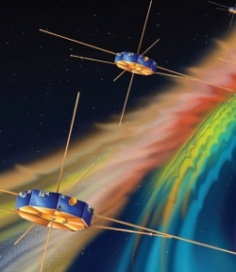
GOES-R
GOES-R is a geostationary environmental monitoring satellite which will replace the GOES-N, -O and -P series of satellites. This joint NASA and NOAA mission contains six different instruments and will continue to provide the same service as previous GOES satellites. Due for launch in 2015, it will begin service in 2016 as GOES 14 retires, and has been designed to last to 2025. SpaceWire is used to transmit all sensor, telemetry, ancillary, command data, and time codes between the instruments and the spacecraft.
ExoMars
The joint ExoMars mission between ESA and NASA will provide further biological and environmental information about Mars, paving the way for robotic missions and human exploration. The orbiter and the descent landing demonstrator are due to be launched in 2016, with the two rovers following in 2018. The rovers will use SpaceWire to connect the various cameras to the data-handling and processing system.
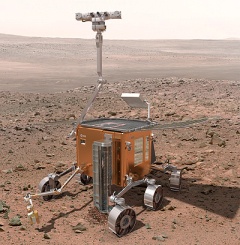
PnPSat-1
U.S.A.’s Air Force Research Laboratory’s Plug-and-Play Satellite was designed to be the first satellite to demonstrate the ability of plug-and-play assembly of spacecraft. It can reduce the integration time of satellites by using open standards and a simplified assembly process. PnPSat-1 features a SpaceWire Router to provide high performance interconnectivity between twelve endpoint ports, to which various equipment can be connected. It is currently awaiting a launch date.
